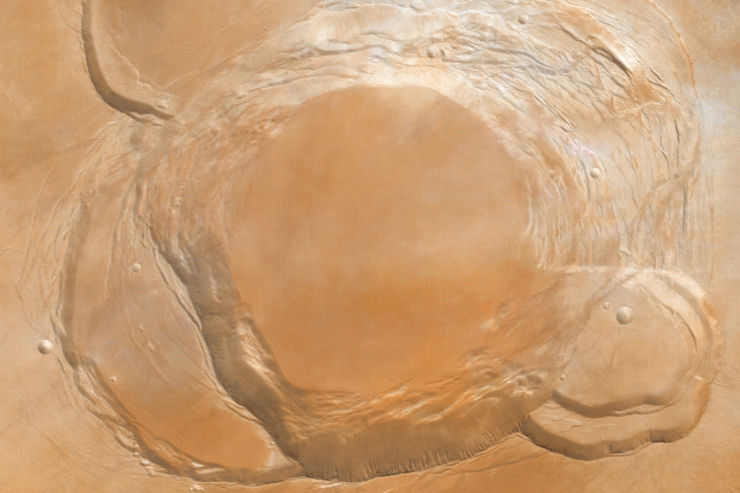This movie shows views of Mars as Mars Express loops between apoapsis (maximum height above the surface), at 10,527 km, to periapsis (lowest height), at just 358 km, and back again.
The giant volcanoes of Mars can be clearly seen at the start of the video, visible as a constellation of dark spots on the desert surface. They are followed by a glimpse of the icy South Pole before plunging into the darkness of the planet’s night side. Daylight returns with a soaring ride over the spiral ices of the Martian North Pole. At the very end, Phobos passes far beneath Mars Express, and the tiny moon’s disk can be seen as a dark circle moving from top to bottom.
The images used to generate this video, 600 in total, were acquired by the Visual Monitoring Camera (VMC) during the 8194th orbit on May 27, 2010, between 02:00 and 09:00 UTC. This is the first such video ever generated from a spacecraft orbiting Mars.
The VMC is a low-resolution, non-scientific digital camera originally used only to confirm the separation of the (later lost) Beagle 2 lander from Mars Express in 2003.
See also:
Astronaut’s eye view: Mars Express orbiting the Red Planet

